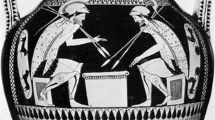Abstract
Background
Simulation-based training has been considered as the most promising curriculum for neurosurgical education to finally improve surgical skills with the greatest efficiency and safety. However, most of the simulators including physical models and virtual reality systems are relatively expensive, which limits their promotion. In this study, the authors tried to develop a realistic, low-cost, and reusable simulator for endoscopic third ventriculostomy (ETV) and evaluate its validity.
Methods
A 3D-printed rigid skull with the ventricular system originated from a de-identified patient with obstructive hydrocephalus was constructed. The third ventricular floor was designed as a replaceable module. Thirty-nine neurosurgeons tested the simulator and a rating system was established to assess their performance. All participants filled out questionnaires to evaluate the simulator after training. Five neurosurgical students were recruited to finish the whole training for ten times in order to explore the learning curve of ETV.
Results
We found that (1) the more experienced surgeons performed obviously better than the rather inexperienced surgeons which verified that our model could reflect the ability of the trainees; (2) as the training progressed, the scores of the post-graduates increased and the fifth training average score was obviously higher than their first training average score. The feedback questionnaires showed the average scores for value of the simulator as a training tool and global rating were 3.15 and 3.54 (on a 4-point scale).
Conclusion
Our model was practical for ETV training. The results of our program showed that our model could precisely reflect the operators’ ability to perform ETV and could make it more efficient to master basic skills.





Similar content being viewed by others
References
Bova FJ, Rajon DA, Friedman WA, Murad GJ, Hoh DJ, Jacob RP, Lampotang S, Lizdas DE, Lombard G, Lister JR (2013) Mixed-reality simulation for neurosurgical procedures. Neurosurgery 73(Suppl 1):138–145
Bouras T, Sgouros S (2011) Complications of endoscopic third ventriculostomy. J Neurosurg Pediatr 7(6):643–649
Weinstock P, Rehder R, Prabhu SP, Forbes PW, Roussin CJ, Cohen AR (2017) Creation of a novel simulator for minimally invasive neurosurgery: fusion of 3D printing and special effects. J Neurosurg Pediatr 20(1):1–9
Breimer GE, Bodani V, Looi T, Drake JM (2015) Design and evaluation of a new synthetic brain simulator for endoscopic third ventriculostomy. J Neurosurg Pediatr 15(1):82–88
Filho FV, Coelho G, Cavalheiro S, Lyra M, Zymberg ST (2011) Quality assessment of a new surgical simulator for neuroendoscopic training. Neurosurg Focus 30(4):E17
Hooten KG, Lister JR, Lombard G, Lizdas DE, Lampotang S, Rajon DA, Bova F, Murad GJ (2014) Mixed reality ventriculostomy simulation: experience in neurosurgical residency. Neurosurgery 10(Suppl 4):576–581 discussion 581
Cohen AR, Lohani S, Manjila S, Natsupakpong S, Brown N, Cavusoglu MC (2013) Virtual reality simulation: basic concepts and use in endoscopic neurosurgery training. Childs Nerv Syst 29(8):1235–1244
Harrop J, Lobel DA, Bendok B, Sharan A, Rezai AR (2013) Developing a neurosurgical simulation-based educational curriculum: an overview. Neurosurgery 73(Suppl 1):25–29
Rehder R, Abd-El-Barr M, Hooten K, Weinstock P, Madsen JR, Cohen AR (2016) The role of simulation in neurosurgery. Childs Nerv Syst 32(1):43–54
Bryson EO, Levine AI (2008) The simulation theater: a theoretical discussion of concepts and constructs that enhance learning. J Crit Care 23(2):185–187
Wen G, Cong Z, Liu K, Tang C, Zhong C, Li L, Dai X, Ma C (2016) A practical 3D printed simulator for endoscopic endonasal transsphenoidal surgery to improve basic operational skills. Childs Nerv Syst 32(6):1109–1116
Tai BL, Rooney D, Stephenson F, Liao PS, Sagher O, Shih AJ, Savastano LE (2015) Development of a 3D-printed external ventricular drain placement simulator: technical note. J Neurosurg 123(4):1070–1076
Acknowledgments
We thank the teaching and research section of anatomy, Nanjing University, for technical support and equipment assistance.
Author information
Authors and Affiliations
Corresponding author
Ethics declarations
Conflict of interest
The authors declare that they have no conflict of interest.
Additional information
Publisher’s note
Springer Nature remains neutral with regard to jurisdictional claims in published maps and institutional affiliations.
Rights and permissions
About this article
Cite this article
Zhu, J., Yang, J., Tang, C. et al. Design and validation of a 3D-printed simulator for endoscopic third ventriculostomy. Childs Nerv Syst 36, 743–748 (2020). https://doi.org/10.1007/s00381-019-04421-8
Received:
Accepted:
Published:
Issue Date:
DOI: https://doi.org/10.1007/s00381-019-04421-8




